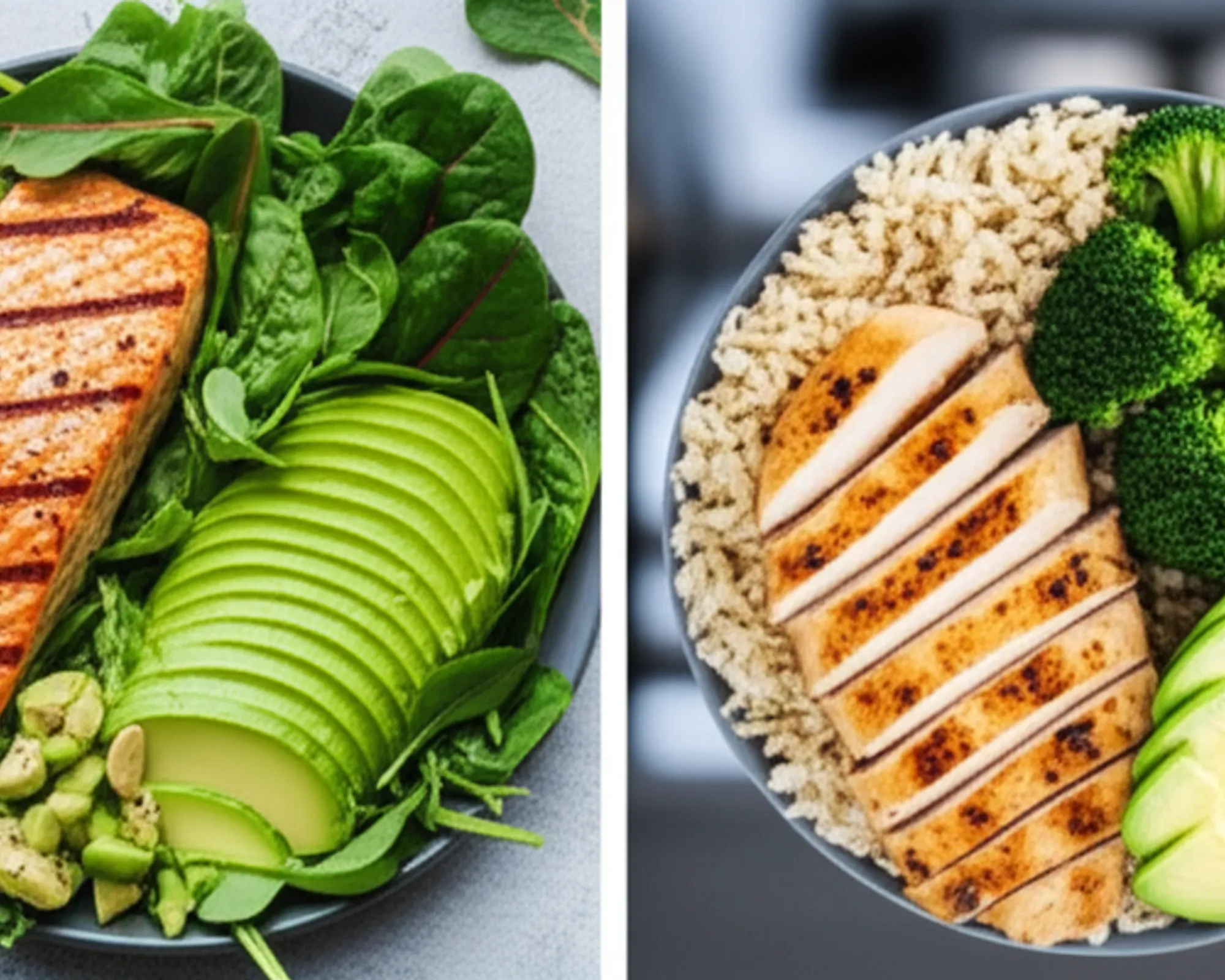The Ultimate Macro Split for Bodybuilders

For bodybuilders, the pursuit of an aesthetically pleasing and powerful physique goes far beyond just lifting heavy weights. While intense training provides the stimulus, it's nutrition that fuels growth, recovery, and ultimately dictates the success of your efforts. At the heart of a bodybuilder's diet lies the "macro split" – the precise ratio of protein, carbohydrates, and fats consumed daily. Getting this right isn't just about eating healthy; it's about optimizing your body's environment for muscle hypertrophy, fat loss, and peak performance. Forget generic diet advice; bodybuilders require a strategic, calculated approach to their macronutrient intake. This guide will delve into the ultimate macro split, empowering you to dial in your nutrition for unparalleled results.
Understanding Macronutrients: The Building Blocks
Before we dissect the ideal ratios, let's briefly revisit what each macronutrient brings to the table:
- Protein: The undisputed king of muscle building. Composed of amino acids, proteins are the structural components of muscle tissue. They are essential for repair, growth, and maintaining lean mass, especially during calorie deficits.
- Carbohydrates: The primary energy source for your body and your workouts. Carbs are broken down into glucose, which is stored as glycogen in your muscles and liver. Adequate carbohydrate intake fuels high-intensity training, aids recovery, and spares protein from being used for energy.
- Fats: Often misunderstood, dietary fats are crucial for hormone production (including testosterone), nutrient absorption, cell function, and overall health. They also provide a concentrated source of energy.
Protein: The Foundation of Growth
For bodybuilders, protein intake is non-negotiable. It's the building block that allows your muscles to repair and grow stronger after being broken down during training.
- Recommended Intake: General recommendations for bodybuilders typically range from 1.6 to 2.2 grams of protein per kilogram of body weight (0.7 to 1 gram per pound). Some even advocate for slightly higher during cutting phases to preserve muscle mass.
- Sources: Lean meats (chicken breast, turkey, lean beef), fish (salmon, tuna, cod), eggs, dairy (Greek yogurt, cottage cheese), whey protein, casein protein, and plant-based options (lentils, beans, tofu, tempeh).
Carbohydrates: Fuel for Performance and Recovery
Carbohydrates are your body's preferred energy source, especially for the high-intensity, anaerobic demands of weight training. They replenish muscle glycogen stores, which are vital for sustained performance and recovery.
- Recommended Intake: This is the most variable macronutrient, heavily dependent on your training volume, intensity, and current phase (bulking or cutting). For bulking, carbohydrates often make up the largest portion of your calories. During cutting, they are strategically reduced but never eliminated to maintain energy and prevent muscle loss. A good starting point can be 3-6 grams per kilogram of body weight (1.5-3 grams per pound), adjusting based on your goals.
- Types & Sources: Focus on complex carbohydrates for sustained energy: oats, brown rice, quinoa, sweet potatoes, whole-grain bread, fruits, and vegetables. These provide fiber, vitamins, and minerals alongside energy. Simple carbohydrates (like dextrose or fruit juice) can be useful post-workout for rapid glycogen replenishment.
Fats: Essential for Hormones and Health
Despite their caloric density, dietary fats are absolutely vital for a bodybuilder's health and progress. They play a critical role in hormone production (including testosterone, which is crucial for muscle growth), nutrient absorption, and maintaining cell integrity.
- Recommended Intake: Healthy fats should constitute 15-30% of your total daily caloric intake. This often translates to 0.5-1 gram per kilogram of body weight (0.2-0.45 grams per pound). Going too low on fats can negatively impact hormone levels and overall health.
- Sources: Avocados, nuts (almonds, walnuts), seeds (chia, flax, pumpkin), olive oil, fatty fish (salmon, mackerel), egg yolks. Limit saturated and trans fats.
Calculating Your Needs: The Starting Point
Before you can determine your macro split, you need to know your total daily calorie target.
- Calculate your Basal Metabolic Rate (BMR): This is the number of calories your body burns at rest. You can use formulas like Mifflin-St Jeor or Harris-Benedict, or an online calculator.
- Determine your Total Daily Energy Expenditure (TDEE): Multiply your BMR by an activity factor based on your training intensity and daily movement.
- Sedentary (little or no exercise): BMR x 1.2
- Lightly active (light exercise/sports 1-3 days/week): BMR x 1.375
- Moderately active (moderate exercise/sports 3-5 days/week): BMR x 1.55
- Very active (hard exercise/sports 6-7 days/week): BMR x 1.725
- Extremely active (hard daily exercise/physical job): BMR x 1.9
- Adjust for your Goal:
- Bulking (Muscle Gain): Add 250-500 calories to your TDEE.
- Cutting (Fat Loss): Subtract 250-500 calories from your TDEE.
- Maintenance: Stick to your TDEE.
Macro Splits for Different Phases:
The "ultimate" macro split isn't a fixed number; it's a dynamic strategy that adapts to your current goals.
1. Bulking Phase (Muscle Gain):
- Goal: Maximize muscle growth while minimizing fat gain.
- Calories: TDEE + 250-500 kcal
- Protein: 1.8-2.2g/kg (0.8-1g/lb) of body weight. This high intake supports muscle repair and growth.
- Fats: 20-25% of total calories. Essential for hormone optimization.
- Carbohydrates: The remaining calories. This will be the largest macro, fueling intense workouts and replenishing glycogen stores for growth. Typically 4-7g/kg (1.8-3.2g/lb) or more.
- Example Split (Approximate %): Protein 25-30%, Fats 20-25%, Carbs 45-55%
2. Cutting Phase (Fat Loss):
- Goal: Preserve as much muscle as possible while aggressively losing body fat.
- Calories: TDEE - 250-500 kcal (or more aggressive, depending on individual)
- Protein: 2.0-2.5g/kg (0.9-1.1g/lb) of body weight. Higher protein helps prevent muscle breakdown and promotes satiety during a calorie deficit.
- Fats: 20-25% of total calories. Crucial for hormonal health, even when cutting. Don't drop too low.
- Carbohydrates: The remaining calories. This will be significantly lower than bulking, but still strategically included to fuel workouts and prevent extreme fatigue. Often 2-4g/kg (0.9-1.8g/lb).
- Example Split (Approximate %): Protein 35-40%, Fats 20-25%, Carbs 35-45%
3. Maintenance Phase:
- Goal: Maintain current body composition and strength, often used between bulking and cutting cycles or for sustained fitness.
- Calories: TDEE
- Protein: 1.6-2.0g/kg (0.7-0.9g/lb) of body weight. Sufficient for muscle repair and recovery.
- Fats: 20-30% of total calories. Balanced for overall health and hormone function.
- Carbohydrates: The remaining calories, providing consistent energy. Typically 3-5g/kg (1.3-2.3g/lb).
- Example Split (Approximate %): Protein 25-35%, Fats 20-30%, Carbs 40-50%
Flexibility and Adjustment: The Art of Macro Tracking
These are starting points, not rigid rules. Your body is unique, and your needs will evolve.
- Track Everything: For at least a few weeks, meticulously track your food intake using an app. This gives you a clear picture of what you're actually consuming.
- Monitor Progress: Pay attention to how your body responds. Are you gaining muscle (bulking)? Losing fat (cutting)? Maintaining? How is your energy in the gym?
- Adjust Gradually: If you're not seeing desired results, make small adjustments (e.g., add or subtract 100-200 calories, or shift 5-10% of calories between carbs and fats). Don't overhaul your entire diet overnight.
- Listen to Your Body: Hunger levels, energy, sleep quality, and mood are all indicators of whether your macro split is working for you.
Conclusion:
The ultimate macro split for bodybuilders isn't a one-size-fits-all formula, but rather a personalized, adaptable strategy built upon a deep understanding of protein, carbohydrates, and fats. By calculating your caloric needs, understanding the role of each macronutrient, and adjusting your ratios according to your bulking, cutting, or maintenance goals, you unlock your body's full potential. Remember, consistency, meticulous tracking, and a willingness to adapt are your most powerful tools in mastering your nutrition and forging the physique you desire. Fuel your body intelligently, train hard, and watch your bodybuilding aspirations become reality.


